The Evolution of Women’s Fashion: From Constraint to Confidence
Fashion has always been more than just fabric. It’s a living, breathing reflection of identity, power, and culture. For women, in particular, fashion has mirrored their journey — from restriction to freedom, from silent beauty to bold individuality.
The transformation of women’s fashion over the past century tells a powerful story: one of resilience, rebellion, and ultimately, liberation. And today, as we embrace minimalist elegance and quiet luxury, we carry the strength of that evolution stitched into every hemline.
Let’s take a graceful walk through time and see how far we’ve come — from corsets and crinolines to blazers and bias-cuts.
1900s – The Age of Structure and Sophistication
At the turn of the 20th century, women’s fashion was defined by formality. Hourglass silhouettes were the standard — think tight corsets, full skirts, and S-bend posture-enhancing bodices. Elegance was synonymous with constraint.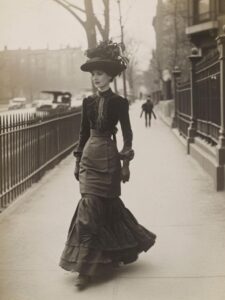
Materials & Design:
-
Heavy fabrics like silk, velvet, and wool.
-
High collars, puffed sleeves, and intricate lace.
-
Accessories like gloves and hats were non-negotiable.
Reality Check:
Though breathtakingly beautiful, these outfits were anything but practical. They restricted movement and reinforced the idea that beauty had to be suffered for. Fashion was not for function — it was for spectacle.
1920s – The Rebellion Begins: Enter the Flapper
Post World War I, the world changed — and so did women’s roles. They voted, worked, and wanted fashion to reflect their newfound independence. Enter the flapper girl, who ditched the corset and chose freedom.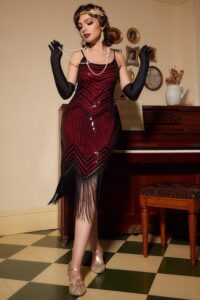
Key Elements:
-
Drop-waist dresses that didn’t emphasize curves.
-
Bobbed hair, cloche hats, and a new daring attitude.
-
Looser fits, lighter fabrics, and shorter hemlines.
What This Meant:
For the first time, fashion became a tool for self-expression rather than oppression. Women wore what felt good — and looked just as powerful doing it.
1950s – The Hourglass Returns, But Softer
After the chaos of WWII, the 1950s idealized femininity again. Christian Dior’s “New Look” brought back cinched waists and full skirts — but with more comfort, fabric innovation, and glamour.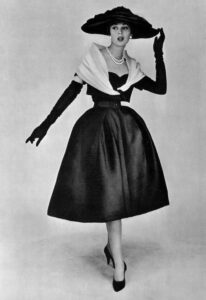
Signature Pieces:
-
Tea-length dresses with padded hips.
-
Elegant gloves, kitten heels, and pearl accessories.
-
Structured but more breathable corsetry.
Fashion Mood:
Elegant, polished, and refined. Women had more choices — working girls wore pencil skirts and blouses, while homemakers donned floral day dresses. It was a return to “classic” femininity but on their own terms.
1960s – The Swinging Shift of Power
The 1960s brought color, movement, and mod. It was an era of cultural revolution, and fashion reflected it boldly.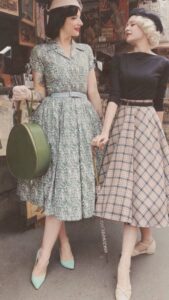
Iconic Trends:
-
Shift dresses (bye-bye waistlines), mini skirts, and bold patterns.
-
Feminine and androgynous styles blended — think Twiggy and Brigitte Bardot.
-
The pillbox hat and cropped suits (hello Jackie Kennedy).
Impact:
Fashion became youthful, experimental, and democratic. It allowed women to be playful, powerful, and politically expressive — all at once.
1970s – The Era of Expression and Boho Rebellion
The 70s threw out every rulebook. It was the decade of disco, flower power, and self-liberation. Women mixed vintage with new, masculine with feminine.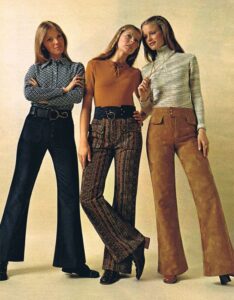
Key Pieces:
-
Bell-bottoms, peasant blouses, wrap dresses.
-
Jumpsuits and wide-leg trousers became work staples.
-
Earth tones and flowing fabrics ruled.
Why It Mattered:
Fashion wasn’t about looking “ladylike” anymore. It was about feeling free — from expectations, from trends, from rigid silhouettes. Comfort and identity became fashion’s new pillars.
1980s – Power Dressing Takes Over
Women were entering boardrooms and asserting space in professional arenas — and fashion mirrored this ambition.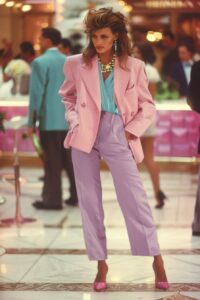
Hallmarks of the Decade:
-
Power suits with shoulder pads.
-
Bold colors, geometric shapes, oversized coats.
-
Luxury brands became more accessible — logo culture began.
Cultural Shift:
For the first time, femininity and authority coexisted. Women didn’t have to dress like men to be powerful — they could define their own strength.
1990s – Minimalism Makes Its Mark
The 90s brought a much-needed calm after the maximalism of the 80s. Clean lines, simple cuts, and quiet tones reigned supreme.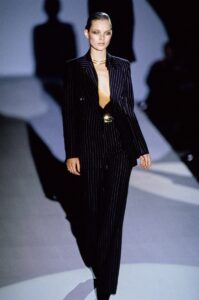
Popular Styles:
-
Slip dresses, high-waist jeans, blazers, white tees.
-
The Kate Moss effect — effortless and raw.
-
Grunge and chic coexisted.
Significance:
This was the genesis of functional fashion. Women sought versatility — clothes that could move between work, errands, dates, and lounging — with style.
2000s to Now – Efficiency Meets Expression
From Y2K glitter to 2010s fast fashion chaos, we’ve arrived at an era where mindful dressing is finally back. The modern woman wants clothes that are elegant, expressive, and efficient.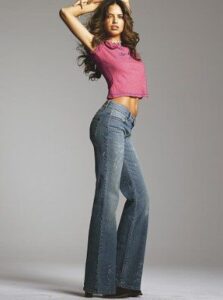
Current Mood:
-
Capsule wardrobes, quality over quantity.
-
Minimalist fashion: blazers, tailored trousers, trench coats, slip skirts.
-
Vintage pieces mixed with timeless staples.
Why It Works:
Modern fashion doesn’t trap you. It adapts to your lifestyle. From work to brunch, your clothes are now an extension of who you are — not a costume to impress others.
The Rise of Functional Elegance
The idea of “unleashing elegance” today looks a lot different than it did in 1900. No longer do women need to wear corsets or carry ten layers of petticoats to be taken seriously. Today, it’s about quiet confidence — well-cut fabrics, neutral tones, breathable materials, and intentional silhouettes.
That’s why the minimalist old money aesthetic is taking over — not just for its timeless beauty but for its efficiency.
Here’s why it matters:
-
Comfort = Confidence: When you’re not worried about tugging, adjusting, or tripping over your hemline, you walk taller.
-
Timeless = Sustainable: A neutral wool coat will serve you years longer than a trendy micro-top.
-
Simple = Sophisticated: A well-fitted blazer speaks louder than sequins ever could.
You Don’t Have to Sacrifice Beauty for Practicality
That’s the lesson we’ve learned through the decades — and that’s the philosophy we live by at The Vintage Store – Unleash Your Elegance.
Every piece in our collection is handpicked to reflect a century’s worth of lessons:
Tailored. Timeless. Tasteful.
We believe in fashion that fits your life, not the other way around.
Ready to embrace the next chapter in women’s fashion — one of simplicity, freedom, and refinement?
Shop our latest collection and discover the power of minimalist elegance.
